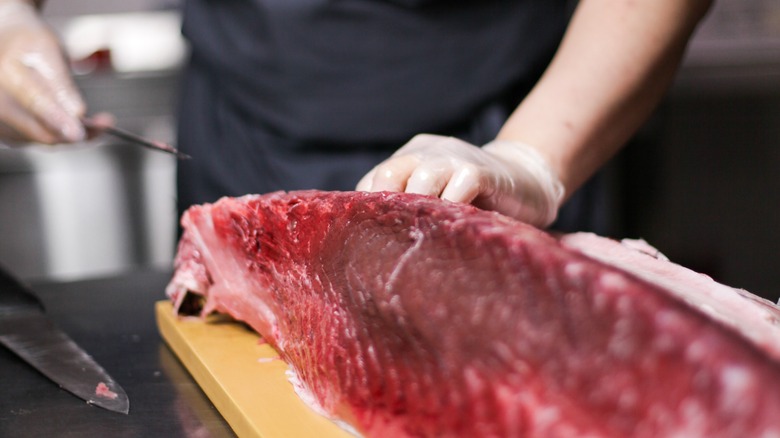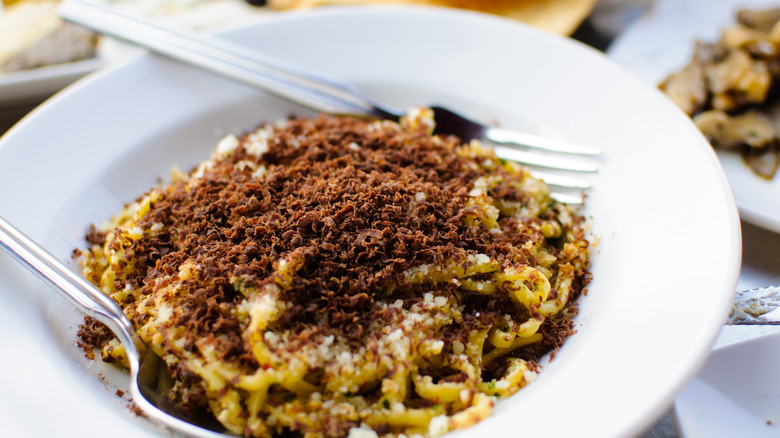Less Is More When Using Sardinian Cured Tuna Hearts
Forget the canned seafood and seared steaks, it's time to embrace eating fish from top to tail, starting with cured tuna hearts. Atlantic bluefin tuna are a fish of gigantic proportions and have equally massive health benefits. A great source of protein, Fishwatch.gov explains this fatty fish is also rich in selenium, thiamin, vitamin B6, and omega-3 fatty acids. Not wasting a single morsel, Sardinians have adopted some creative ways to use tonno rosso, even the organs. Just remember, that when it comes to cured tuna hearts, less is more.
Sardinia is an Italian island located in the Mediterranean. Unsurprisingly, fishing continues to play a significant cultural and economic role in this region. Most prized is the rare bluefin tuna, especially in the port town of Carloforte, where it's harvested using a system of nets known as tonnara. Since this breed of tuna migrates through the Strait of Gibraltar to its spawning grounds in the Mediterranean Sea each summer, the harvest season is relatively brief (via The Fish Site). While certain cuts of the fish are best enjoyed stewed, as carpaccio, or steaks, La Cucina Italiana explains that other parts can also be preserved, being packed in oil or cured, and last well into the winter. Enter, cuore di tonno, or the tuna heart.
Use the salty cured hearts sparingly
Curing is a no-brainer when it comes to conserving this precious catch. After removing the tuna heart, the organ isn't sliced or cut into pieces, but rather left whole. According to Caviar Star, it's then covered in sea salt and pressed with weights, which allows the salt to work its way into the muscular tissue — only after 20 days of dry curing is the tuna heart ready. The result is a plum-colored steak with an incredibly unique, powerful flavor.
While a meaty bluefin filet has a fresh taste and gentle salinity, cured tuna hearts are much more intense. Often packed in brine, Atlas Obscura explains that cuore di tonno is salty, with the savory trace of iron-rich blood. Teeming with complex umami richness, cured tuna heart is reminiscent of bottarga (cured fish roe) as it boasts a similar sea-kissed pungency (via Caviar Star).
Given that cured tuna hearts can pack some fishy flavor, High End Food Store recommends using the delicacy sparingly, either sliced and seasoned simply with olive oil or lemon juice. It can also add some punchy dimension to recipes when shaved over pasta and seafood dishes or into soups and sauces.

